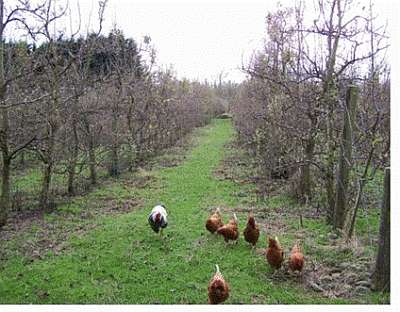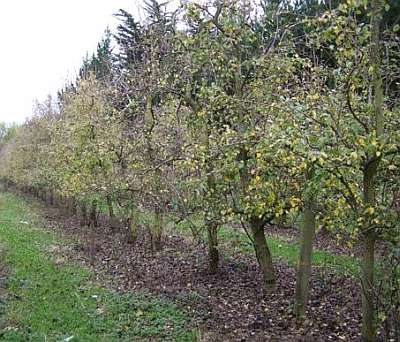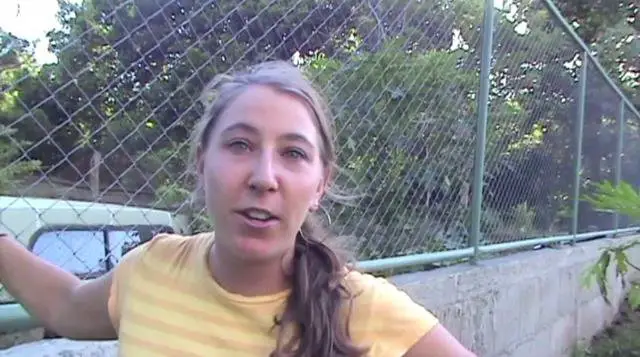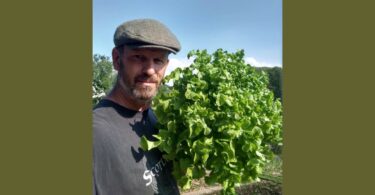Each month V.D. Kaviraj will answer questions about plants and plant problems. Kaviraj is one of the foremost pioneers of Agro-homeopathy and author of the book, Homeopathy for Farm and Garden.
Send your questions with sufficient detail and pictures when possible (JPG or GIF format) to [email protected] with the subject “Plant Doctor”.
Note: When I refer to treating plants with homeopathic remedies, this is the standard dosing procedure: Put 20 drops of a 6X potency in a litre of water. Succuss the bottle 50 times. Put this litre in the watering can, fill it up with 19 litres of tap water and stir. If the watering can is smaller, the amount of remedy put in must be proportionally smaller. Thus a 10 litre can needs only ½ litre and just 10 drops of the remedy. Apply the contents of the watering can to the roots of the plants to be treated.
Note: You can watch a brief video showing the effects of homeopathy on “sick” vegetables in a garden in Nicaragua: http://vimeo.com/13077020
Dear Kaviraj,
I would like to ask your advice about a problem with olive trees we have in fields under crop close to the sea. I mean all the zone of the Adriatic Sea, both sides (Italy and Croatia).

Our organic way to fight their infestation are trap-bottles containing vinegar and sugar, but it is a very palliative method when there are many flies. Can we treat the plants with homeopathic remedies?
Thank you, kind regards,
Anna Fontebuoni
Dear Anna,
I would think of Coccinella, which seems to be a universal remedy for soft-bodied insects and larvae. I have used it on insects that have nothing to do with the aphid – sawfly larvae and they are also covered by it. I don’t guarantee a full recovery with that remedy though, but it is worth trying.
As an example I give you the images of the sawfly larvae infestation on a farm in New Zealand. The first shows the untreated trees and the second the treated.

Untreated Trees

Treated Trees
Dear Kaviraj
Winter was hard on the Rhododendrons and some of them turned completely brown, but now have some new growth. What can I do to get them back and make them hardy for next winter. Also, how can I get rid of poison ivy when it is mixed in with beautiful ground cover.
Thank you
Mary Anne Newberg
Hi Mary Anne,
Your Rhododendrons can be given a boost with some old cow dung. They love that stuff. Mix in some of the top layer in the forest, they like that too. Then you can give it a dose of Silicea, to make it more winter hardy.
That Poison Ivy is a bigger problem. You will need gloves to protect you while pull them out, or have that done by a competent person. After that, you may use Juglans nigra the remedy used to suppress it. I have my doubts that you can get rid of it completely, unless you change the pH of the soil radically, which will require the set up of a completely different type of garden.
Dear Kaviraj,
What remedy do you recommend for fire blight on apple trees?
Thank You,
Bob Luzader
Dear Bob
For fireblight I recommend Belladonna and/or Aconite depending on the colour of the blight. If it is light coloured I would use Aconite and if dark, Beladonna. It depends also on how much the plants like water. If not much, or taking long to drink, Belladonna is more indicated, while drinking much and wanting more is Aconite. The first may be thirsty, but fears water. This expresses itself in a tree by keeping the ground moist for a long time, while the other soaks up every drop rather fast. The second is therefore thirsty and drinks. If this fails, Salicylic acid or Natrum salicylicum can be resorted to.
Dear Dr. Kaviraj,
I live in dry rural South Australia. This spring we are being threatened by a serious locust plague. It is expected to travel down through the eastern states hitting SA by some time in spring. Are there any homoeopathic precautions that I can take that will make my garden less palatable to this pest? I already suffer from sandy soils and difficult gardening conditions and hoped I could prepare for the coming of the
locusts. Also, given that there may be a solution, could it be applied to large rural properties /farms?
Regards
Deborah
Dear Deborah,
I recommend a dose of Silicea – sand – to counteract the effects of sandy soils. As to the locust, I have not yet found what is the natural predator, although I must say that I have seen the Redback spider as a voracious eater of locusts. My recommendation is therefore to spray your plants with this spider remedy (6x) and have them take it up by the roots as well. This should protect against too much damage, but of course in such swarms other pheromones are possibly overwhelmed. Each of these insects has a sense of smell much finer than ours, and the fruitfly can smell fruit from 6 miles distant. In a 6X potency, the pheromones are still present and may be strong enough coming out of your field to keep them off.
Latrodectus spp. katipo
New Zealand spider. Australian redback spider. Latrodectus katipo. Latrodectus mactans. NO Araneidea, Class Arachnida. Tincture of the live insect. Tirturation of the live insect.
GENERAL
The redback spider is a ferocious predator, whose poison is even dangerous to man. Those bitten by this spider require direct help from a poison centre, since the poison decomposes the blood and causes its degeneration. Its poison is related to that of the papal cross spider, Aranea diadema and to the Black widow spider. Its effects resemble those of the Black widow
closest both in effect and in appearance. The animal is reasonably sized and can be immediately recognised by the red spot on its back. When this predator is present in the garden, it is best not to disturb it, since it is aggressive, and its presence is beneficial. As a remedy it is very useful against most pests, since the spider is a voracious hunter. Therefore it is of almost universal use in the garden and at home, for a large variety of pests that plague food crops and our ornamental plants.
Dear Kaviraj,
I find holes in leaves in a variety of my plants, veggies and flowers mostly. Is that something homeopathy can deal with? Also, we’ve had all these 90 degree days without much rain. My eggplants are drooping and the lower leaves turning yellow. Would a remedy help?
Susan Boland
Dear Susan,
If you find holes in the leaves you must look if they are all green and if so, look under the leaves for little critters that eat them from the bottom up. They may also be snails. Once you know this let me know.
If on the other hand the edges are coloured, then you have either a nutrient problem or a disease.
If the holes are small, like shot, then it is time to find out where the nearest roundup-ready soy is growing and if the wind could have brought the pollen, which contains an herbicide.
For your eggplants I would recommend Carbo veg. That is the remedy to give when there is loss of vital fluids. The plants have dried out.
Dear Kaviraj,
Is there a way to get rosemary to overwinter in Northeastern U.S. I have
replanted next to the house in the hopes that they might do better. My
house has provided shelter for canna lilies in the past.
Also, what is the name of your book and where is it available?
Thanks,
Sharlene
Hi Sharlene,
Rosemary you could overwinter on the windowsill in the kitchen. The kitchen is warm though often not heated and if the windowsill is on the south, you do well (Unless you live Down Under).
It is a good idea to lay a nice bunch of straw around the base of the plants, to protect them against frost, if you have them at the side of the house. They like the sun, so it should be the south side.
Editor’s note: Kaviraj’s book is called: Homeopathy for Farm and Garden and is widely available.





Is there any homepathic tonic for genertal health of plants in the pots, Which effect it growth
Yes there is. Tests done in Mexico by Dr Menenses, have proven that several doses of Carbo veg increase yield and produce bigger plants.
I have a ? regarding brown slugs which have invaded my garden and are rather ravinous is there any thing one can spray on vegetables /plants to deture them ?
I live in Sweden so only have the problem during the summer months, Thanks Dick
Yes you can use Helix tosta 6X to get rid of snails.
Available from http://www.considera.co.uk
kaviraj sir,ours is a cooperative and we grow tomatoes on commercial basis.early blight is the monster we face every year. on potatoes the late blight is the demon. kindly suggest some measure.farms are situated at a height of appx. 6000fts.waiting eagerly.
Keep potatoes and tomatoes apart as they both can get early and late blight contaminating each other. Better grow a different product next to them, such as beans. They will protect the potato from blight better than anything alse.
Remedy for potatoes is Phaseolus, and companion plants are members of the cabbage family, carrot, celery, corn, dead nettle, flax, horseradish, marigold, peas, petunia, onion and Tagetes marigold. Protect them from scab by putting comfrey leaves in with your potato sets at planting time.
Horseradish, planted at the corners of the potato patch, provides
general protection.